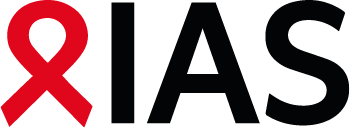Share Abstract
Sub-optimal outcomes with switching to zidovudine vs. recycling tenofovir in second-line treatment in Haiti
Abstract Content:
BACKGROUND: World Health Organization (WHO) guidelines recommend an optimized nucleoside reverse transcriptase inhibitor (NTRI) backbone for second-line ART, including switching from tenofovir (TDF) to zidovudine (AZT), with presumed low-level AZT resistance. However, many providers in resource-poor countries recycle TDF in second-line treatment due to concerns for toxicity and twice-daily dosing of AZT and due to demonstrated efficacy of NRTIs (in spite of genotypic resistance found in several recent studies).
METHODS: Using electronic medical records from GHESKIO (Port-au-Prince, Haiti), we identified adult patients who failed first-line Efavirenz (EFV)/TDF/3TC and were switched to a second-line regimen that included ritonavir-boosted protease inhibitor (bPI), in combination with either TDF/3TC or AZT/3TC. Retention, adherence, and viral suppression outcomes were evaluated at 12 month after initiation of second-line regimen. Adherence was approximated using pharmacy refill data. Multivariable logistic regression was used to determine predictors of virologic suppression.
RESULTS: From 2012 to 2018, 1,017 patients met study criteria and were analyzed. Of these, 509/1017 (50.0%) were women. Median patient age was 40.7 years. 733/1017 (72.1%) patients continued on TDF/3TC on second-line, while 284/1017 (27.9%) were switched to AZT/3TC. Retention was similar in both groups with 612/733 (83.5%) in the TDF/3TC and 236/284 (83.1%) in the AZT/3TC group remaining in care. Of the patients with viral load at 12 months, 253/480 (52.7%) had VL<200 copies/mL in TDF/3TC vs 72/200 (36.0%) in the AZT/3TC group (p<0.001). Viral suppression in patients with â?¥90% adherence was also better in the TDF/3TC group with 166/230 (72.2%) compared to 43/75 (57.3%) in the AZT/3TC group (p<0.016). Predictors of viral suppression included recycled TDF/3TC (odds ratio [OR]: 2.08; 95% CI: 1.46, 2.97), secondary or higher education level (OR: 1.53; 95% CI: 1.10, 2.14) and being married/living together (OR 1.51; 95% CI: 1.00, 2.27).
CONCLUSIONS: The WHO-recommended optimized NTRI backbone for second-line ART, which includes switching from TDF to AZT, was associated with lower rates of viral suppression than recycled TDF in Haiti. This may potentially be due to twice-daily dosing and poor tolerability of AZT. ART adherence was found to be poor regardless of NRTI backbone, therefore additional interventions are needed to improve adherence in this population.
METHODS: Using electronic medical records from GHESKIO (Port-au-Prince, Haiti), we identified adult patients who failed first-line Efavirenz (EFV)/TDF/3TC and were switched to a second-line regimen that included ritonavir-boosted protease inhibitor (bPI), in combination with either TDF/3TC or AZT/3TC. Retention, adherence, and viral suppression outcomes were evaluated at 12 month after initiation of second-line regimen. Adherence was approximated using pharmacy refill data. Multivariable logistic regression was used to determine predictors of virologic suppression.
RESULTS: From 2012 to 2018, 1,017 patients met study criteria and were analyzed. Of these, 509/1017 (50.0%) were women. Median patient age was 40.7 years. 733/1017 (72.1%) patients continued on TDF/3TC on second-line, while 284/1017 (27.9%) were switched to AZT/3TC. Retention was similar in both groups with 612/733 (83.5%) in the TDF/3TC and 236/284 (83.1%) in the AZT/3TC group remaining in care. Of the patients with viral load at 12 months, 253/480 (52.7%) had VL<200 copies/mL in TDF/3TC vs 72/200 (36.0%) in the AZT/3TC group (p<0.001). Viral suppression in patients with â?¥90% adherence was also better in the TDF/3TC group with 166/230 (72.2%) compared to 43/75 (57.3%) in the AZT/3TC group (p<0.016). Predictors of viral suppression included recycled TDF/3TC (odds ratio [OR]: 2.08; 95% CI: 1.46, 2.97), secondary or higher education level (OR: 1.53; 95% CI: 1.10, 2.14) and being married/living together (OR 1.51; 95% CI: 1.00, 2.27).
CONCLUSIONS: The WHO-recommended optimized NTRI backbone for second-line ART, which includes switching from TDF to AZT, was associated with lower rates of viral suppression than recycled TDF in Haiti. This may potentially be due to twice-daily dosing and poor tolerability of AZT. ART adherence was found to be poor regardless of NRTI backbone, therefore additional interventions are needed to improve adherence in this population.
